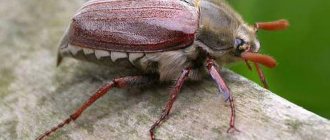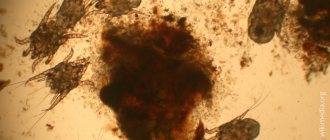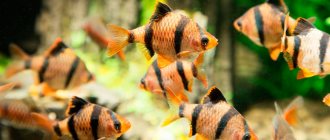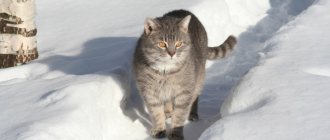Predatory insects eat other insects, called prey, and are quite active because they have to chase their prey. Carnivorous insects feed on many harmful arthropods and are an important part of the biome. The most common insect predators are the beetle, wasp and dragonfly families, as well as some flies such as the flower fly. Other arthropods, such as spiders, are also important predators of insect pests. Some predators feed on only one or a few types of prey, but most hunt a variety of insects and sometimes even each other.
Seven-spotted ladybird
The pronotum of the cow is black with large white spots on the sides. There are seven black spots in total, three on each wing cover and one central spot at the base of the pronotum.
Common lacewing
Adults have long slender bodies, antennae and two pairs of large wings with a reticulate vein. They pierce the victim with large sickle-shaped jaws and feed on biological fluids.
Hoverfly
Preys primarily on aphids and is an important natural regulator of aphid populations (garden pests). Adult hoverflies imitate bees, bumblebees, wasps and sawflies.
Krasotel fragrant
It is nocturnal and hides under logs, rocks or in soil crevices during the day. Runs away quickly when in danger. Can fly, but rarely does so. Attracted by light at night.
Common earwig
It is nocturnal, spending the day under leaves, in cracks and crevices and other dark places. Depends on the weather. A stable, minimally high temperature stimulates activity.
Ant
Black or brown ants are easily recognized by their narrow waists, bulbous abdomens, and ulnar antennae. Most of the time when you watch them, you see workers, all of them are females.
Jumping spider
Easily distinguished by the four large and four smaller eyes on the top of the head. Excellent vision allows them to hunt in the same way as cats, spotting prey at long distances by sneaking and jumping.
Garden ground beetle
Lives in eurytopic forests, found in open areas. Active at night and hunts earthworms, etc. on the forest floor. Recognizable by rows of golden indentations on the wings.
Ground beetle
They fly in May–June and are active at temperatures from 20 to 26°C. When it is above 36°C, they die. During drought, they burrow into the ground to a depth of 40 cm, resuming activity after rains and when the temperature drops.
Dragonfly
They catch prey by grabbing it with their paws. The main food is mosquitoes. The effectiveness of hunting has been proven by a study from Harvard University. Dragonflies caught 90 to 95% of the insects released into the vivarium.
Mantis
Uses pointed front paws to catch live insects. When an alarmed mantis takes on a “threatening” appearance, it raises and rustles its wings and displays warning coloration.
Grasshopper green
Lives in trees and meadows dotted with bushes, eats vegetation and other insects. Females lay eggs in dry soils and use long, curved ovipositors.
Wasp
The mouth parts and antennae have 12-13 segments. Wasps are predatory parasites, they have a sting that is easily removed from the victim, with a small number of barbs. A narrow “waist” attaches the belly to the ribcage.
Bug
They attack unwanted plants and feed on eggs, larvae and adult harmful insects. Bugs biologically control weeds and pest insect populations.
Water strider bug
They run in groups along ponds and streams. The bodies are thin, dark, more than 5 mm long. They use their short front legs to catch insects and eat them on the surface of the water. When there is little food, they eat each other.
Rider
The beneficial arthropod feeds on the eggs, larvae, and sometimes pupae of many insects, including aphids, caterpillars, butterflies, sawflies, leaf pliers, bugs, aphids, and flies.
Fly-ktyr
Known for its predatory behavior and appetite, it feeds on a huge number of arthropods: wasps, bees, dragonflies, grasshoppers, flies and spiders. Maintains insect population balance.
Scolopendra
The voracious predator feeds on invertebrates such as crickets, worms, snails and cockroaches, and also preys on lizards, toads and mice. This is a favorite insect for entomologists' vivariums.
Steppe grasshopper
The giant predator is equipped with sharp spines along the entire length of its front legs and strong jaws. He waits, does not move and opens his front legs wide, as if in a false friendly hug.
Trips
Small insects up to 3 mm feed on plant tissue (flower heads), mites and small insects (including other thrips). The wings are thin and stick-like with a border of long hairs.
Rove beetle
It is found in humid environments, but not in open waters, in forest litter, in fallen decomposing fruits, under the bark of rotting trees, plant materials on the banks of water bodies, in manure, carrion and nests of vertebrate animals.
Who are insects
Insects are a class of invertebrate arthropods that have chitinous bodies. They differ in structure, shape, size and lifestyle.
Life cycle.
All of them go through a life cycle with complete or incomplete transformation. The complete transformation cycle consists of 4 stages:
- egg;
- larva;
- chrysalis;
- adult (imago).
In an incomplete cycle, there is no pupal stage.
| Body structure | Three sections: head, chest and abdomen. Each segment has its own part. |
| Exoskeleton | The outer dense cover of the body and limbs is chitinous. There are growths, thorns, folds, hairs. |
| Colors | Diverse. They can be structural, bright, metallic, with patterns and stripes. |
| Head | With antennae, oral limbs, organs of vision. |
| Breast | It consists of three segments, the legs are attached to the knees and hip. |
| Wings | Two pairs, with a frame and thin fabric, are reinforced with veins. |
| Abdomen | Consists of a number of segments with appendages. |
Karakurt
The karakurt mainly lives in the southern regions of Russia, but in hot years it was also found in the Moscow region. So it's better to play it safe. These spiders are especially dangerous in early and mid-summer. The male karakurt was not seen to be doing anything wrong, but the female, according to tradition, is the owner of one of the most powerful poisons known to mankind. A female karakurt has the power to “put down” an entire herd of small cattle.
For humans, this spider also poses a danger - the karakurt poison causes pain, swelling, and clouding of consciousness. If medical assistance is not provided in time, the bite victim may die. Therefore, in places where these arthropod “killers” live (in particular, in the southern regions), special treatment of the area is carried out from time to time, and clinics and hospitals always have antidote serum in the required quantities.
After being bitten by a karakurt, the victim must be urgently taken to the nearest health care facility so that he can receive the necessary injection.
What should you do to avoid becoming prey to stinging monsters?
These measures are very simple, but they should not be neglected:
- do not wear bright clothes to the dacha or in the forest;
- protect exposed skin when going to potentially hazardous areas;
- wear a hat;
- do not wear perfume;
- Use repellent and mosquito nets whenever possible.
Some insects not only sting painfully, but also pose a serious danger to life. To avoid such a threat, take preventive protective measures in advance. Of course, it is better to avoid poisonous insects. But if it so happens that they “taste” you, thanks to our material you will always know how to behave in such a situation!
Types of insects
Insects are the most numerous representatives of the animal class. In the selection there are some species that are the most common and often found.
Lepidoptera
These are butterflies familiar to everyone. The name comes from the fact that the wings have small scales. They provide strength and affect color and pattern.
ladybugs
These are small, egg-shaped bugs with a small head and a short body. Insects are twofold - beneficial killers of garden insects and carriers of disease or infection.
Bees
A relatively small family of flying representatives. They are useful, feeding on pollen and nectar, thereby promoting pollination and productivity. Several domesticated species produce honey.
Wasps
Another flying insect that does not have a special classification, but has a number of features - they bite and sting painfully. Such neighbors are undesirable for people.
Lice
Parasitic insects that live on the skin of humans. They carry a large number of diseases and cannot live for long without food.
Grasshoppers
This is a subspecies of insects with wings that cannot fly. They are often painted to match the color of their habitat, thus camouflaging themselves. The food varies from plant pests to predators.
flies
Various representatives of flying dipterans. Distributed everywhere, but prefer warm climates. They cause harm, bite and carry diseases.
Mosquitoes
Blood-sucking insects that can also feed on plant debris, but drink blood to reproduce. They are common, carriers of infection and sting painfully and cause itching.
Fleas
A large group of blood-sucking parasites that live on various mammals. They bite, cause itching, and transmit diseases.
Ants
A large family of Hymenoptera, but not using wings as unnecessary. A clear hierarchy and a specific role for everyone is a distinctive feature.
Cockroaches
The most ancient creatures with an extraordinary ability to survive and adapt to various conditions. Pests, carriers of diseases and infections.
Scorpion
Hardly anyone has met a Scorpio at their dacha, especially in the middle zone. But there is a high probability of seeing this arthropod with your own eyes (and it’s good if you can avoid its bite) at popular Russian resorts - in the Crimea, Krasnodar Territory, and also in the North Caucasus.
Nature has decreed that northern scorpions are not as large and dangerous as their southern relatives. After a bite from such a scorpion, a person will suffer pain for a long time, swelling and redness will appear at the site of the bite, but this will definitely not lead to death. If you are allergic to scorpion venom, the prognosis will not be as favorable, so the very first thing anyone should do after being bitten is take an antihistamine. If the pain is severe, call a doctor and, before he arrives, give the victim painkillers and ensure complete rest.
If a scorpion bites a child, this is a reason to immediately call an ambulance.
The role of insects in life
In nature, everything is connected and harmoniously arranged. Therefore, each insect has a specific role. It doesn't always benefit people.
Harmful insects
Depending on your lifestyle, there are insects that only cause harm. They can feed on human waste products, plant juices and fruits. Here are some examples:
- whitefly Little white flies are actually nasty pests that come in large numbers;
- goldentail A pest of fruit trees, the hairy caterpillar is also harmful;
- silverfish. Insects that spoil supplies, paper products, and food. They don't bite people.
Relatively harmful
This is a series of insects that can act in two ways. They often cause harm, but they are also useful in their way of life. So, the most striking examples of this are harmful insects that can bite or sting people, but at the same time protect the area from pests:
- mosquito. An insect similar to a mosquito and also feeding on blood. But it processes organic matter, thanks to which it enriches the soil;
- scolopendra. They bite painfully and cause irritation. But they hunt flies, mosquitoes and fleas;
- crickets. Relatively safe vegetarians, which, if widely distributed, can ruin the harvest.
Useful
Contrary to misconceptions, not all insects harm people. There are a lot of useful inhabitants of the house and garden. Although the appearance of these prominent representatives may be surprising:
- flycatcher An unpleasant-looking insect that rarely bites and does not spoil food. Destroy a lot of small pests;
- mantis. A predator that helps destroy pests on the site;
- Daphnia. Small crustaceans that live in stagnant bodies of water filter the soil and are food for fish.
Mite
Ticks are dangerous because they carry dangerous diseases - tick-borne encephalitis and Lyme disease. Fortunately, not every tick is a carrier of the virus; however, it is not worth the risk, but you need to take preventive measures and protection from the consequences in advance.
For some reason, many people think that ticks live on trees and fall from them in clusters onto peacefully walking passers-by. In fact, ticks mainly live in the grass, which is where they attack their victims.
Ticks are most dangerous in May-June. With the onset of summer, the danger of transmitting viruses decreases slightly, and in September it practically disappears.
Ticks guard their victims along paths and paths. The favorite places of this insect are branches of bushes, tall grass, and small trees.
As a rule, ticks first land on the victim's legs and begin to move upward in search of a more suitable place to bite. The tick can search for a place where the skin is thinner for several hours. In their search, ticks try to get to the groin, collarbones, armpits, chest, and lower back. Unfortunately, a person does not feel the bite (there is an anesthetic substance in the tick’s saliva), and it is possible to detect the blood-sucking pest only when it has thoroughly attached itself to the body and has drunk blood.
You need to get rid of the tick immediately after it is discovered. It is important not to tear off his head - it cannot be left in the human body. After removal, you must submit the tick to a laboratory so that it can be checked for infection.
How to remove a tick
Step 1. The body of the tick is grabbed with tweezers, which are held strictly perpendicular to the surface of the skin, slightly pressing into it.
Step 2. The tweezers are rotated 360 degrees along with the tick and carefully pull out the insect, then place it in a jar or other container.
Step 3. The bite site is treated with iodine or any other alcohol solution.
Many people recommend putting a drop of oil on the tick. This cannot be done - the tick will suffocate and the head will remain in the skin. You also cannot pull a tick with your fingers for the same reason - you can tear off its head.
To protect yourself, doctors recommend getting vaccinated against tick-borne encephalitis. There is no vaccine for Lyme disease. The best prevention is the right clothing: long sleeves, high shoes, thick fabric, trousers tucked into boots, etc., as well as the use of repellents.
After returning from the dacha or forest, be sure to inspect each other for ticks.
Different in socialization
All insects are conventionally divided into two categories: solitary and social. According to the names, they either live on their own and interact only in the case of reproduction, or they exist in a colony, family, or clusters.
Social insects
This includes those who live in an organized family and their own hierarchy. These species have a structure and their own occupation for each family member.
Paper wasps. This species has a nest that is built by workers, a queen that is responsible for reproduction, and animals that feed the offspring.
Termites. They build homes and live in colonies, feed on wood and pose no danger other than possible destruction.
Solitary insects
Those that do not live in colonies or families. They prefer to live alone and not meet others like themselves unless necessary.
Earwigs
After mating, the mother carefully arranges a place of residence and remains there until the babies are able to set out on an independent life. They don't touch anymore.
Scorpion
This arachnid is a prime example of loners. They only meet other representatives of the species when mating is necessary. And even then, the male may suffer.
Hornet
People who are far from biology often confuse a hornet with a wasp. They have some external similarities, but very little. The character of the hornet is not as aggressive as that of the wasp; this insect rarely releases its sting. In other words, the hornet can bite if someone tries to catch it and put it on the palm or destroy its nest. Then you shouldn’t expect mercy from the hornet. In all other cases, this insect will not waste its precious poison - its means of defense.
Many people heard in childhood that three hornet stings are enough to cause death. Fortunately, this is just a children's horror story. Although the hornet's venom is considered the most powerful, the strength of this poison and, consequently, the consequences of the bite largely depend on the type of hornet. For most people, hornet stings are not life-threatening, and the most that can happen is severe pain at the site of the bite.
But for a person who is allergic to bee (wasp) venom, an encounter with a hornet can be life-threatening. In addition, someone who has not been stung by bees before may simply not know about his allergy to their venom. To avoid unnecessary risk, after a hornet sting, a person who has never experienced it should definitely take an antihistamine.
Mantis
The insect is a beautiful green, brown or yellow hue with an interesting pose of the front legs. They are raised upward, as in prayer. Hence the name of the insect. The raised legs of a praying mantis mean a threat to anyone who wants to attack it. This gesture shows that it is better not to approach. Also, raised paws mean that the praying mantis is hunting. On the outer side of the limbs there are sharp, blade-like spines for striking the victim.
Acute vision and the ability to turn their heads 180 degrees help praying mantises hunt. They always see where everything is happening. When eating a victim, the mantis does not relax, so as not to become dinner itself. His movements are slow and unhurried.
Mantises are not dangerous to humans, although they reach 15 cm in length. He is indifferent to non-moving objects. Its diet consists of small rodents, birds, bees, lizards, small snakes, frogs and various insects. Often praying mantises eat their relatives if there is not enough other food. After mating, the female bites off the male's head to satisfy her hunger. Praying mantises are cunning, merciless and voracious predators. The larva is capable of eating up to 5-7 aphids per day. An adult mantis is always hungry. It eats 7-8 medium beetles per day.
Silkworm
We have silkworms to thank for the silk items in our wardrobes. The caterpillars of these butterflies produce silk. More precisely, silk fiber from which the insect builds its cocoon. One larva is capable of producing 15 cm of mulberry in a minute. And in the cocoon of this thread there can be about a kilometer.
The silkworm is unknown in the wild; it was domesticated several thousand years ago in China.
Other types of silkworms are sometimes bred, but they produce fiber of poorer quality.
Fly-ktyr
Outwardly, it looks like a large mosquito.
It flies quickly and quickly attacks its prey, is capable of hovering in the air, and then falling like a stone onto future food. Can attack wasps, dragonflies and beetles. Injecting strong poison into the body of the prey, it quickly sucks it out, then is ready to hunt again. Predatory insects are represented in a huge variety. The list of carnivores could fill an entire book. By hunting and eating living creatures, they have a beneficial effect on the number of herbivorous organisms, help humans fight agricultural pests, and are a link in the food chain.
Ancient organism
Determining the origin of the class of insects has proven somewhat difficult for scientists. The main problem was the lack of fossils of them to reveal phylogenetic relationships. For a long time, based on morphological comparisons, centipedes were considered to be closely related to insects. But the construction of phylogeny (the development of an organism over time) and recent morphological studies have indicated that insects are much closer to crustaceans, and not to millipedes.
Crustaceans are familiar from deposits of the early Cambrian period (about 541 million years), while insects are found in the fossil record only in the Devonian system (about 419 million years). The assumption of their origin from a single ancestor contains a time interval of more than 100 million years, in which insects should already have existed. Recent morphological comparisons and evolutionary reconstructions based on genomic sequences confirm that insects are indeed found as descendants of crustaceans. According to the analyses, insects branched off from crustaceans in the early Devonian (or late Silurian). This verdict is consistent with both paleontological data and the resulting estimate based on molecular clocks.
Cochineal
Several species of insects from which the red dye carmine is made are collectively called cochineal. Carminic acid, which is the main component of paint, is extracted from female cochineal scale insects.
Ararat, oak, Mexican and Polish cochineal are combined under the general name cochineal.
Dyes from these insects were obtained back in the 6th century BC.
Riders
Adults feed on plant foods. The larva requires protein food for development. The female ichneumon injects eggs into the victim's body and injects the virus. It subjects the host body to the development of parasitic larvae that feed on its internal organs. Caterpillars, beetles, large insects, even wasps serve as a home for future offspring. Riders pose no danger to humans.
Bug
Not all bedbugs are predators. Among them there are herbivorous species and individuals with a mixed diet. The most prominent representatives of carnivorous mites are anthocoris, orius and reduviida. At all stages of life, they actively feed on aphids, thrips, whiteflies, spider mites and spiders, eggs of butterflies and beetles. Rhodius bugs feed on eggs, larvae and adults of the Colorado potato beetle. Macrolophus destroy the greenhouse pest - whitefly.
They are actively used in agriculture for pest control. But bedbugs need a lot of food. Having destroyed all the pests, they will change their habitat.
Ants
The ant family includes vegetarians and carnivores. The well-known forest and black garden ants are omnivores. The diet of predatory species includes eggs, larvae, small insects, worms, and amphibians. Ants feed their offspring with animal protein. A striking representative of this is the bulldog ant.
It is larger than a forest ant. Can attack bees and wasps. The powerful jaws of the ant do not give the victim a single chance. For a vegetable garden, a large number of garden ants is destructive. They breed aphids, feed on their sweet secretions and carefully take care of increasing the number of these individuals. Forest ants are real orderlies. Hunting for caterpillars, beetles and worms, they pick up dead creatures and decomposing animal remains.
Common lacewing
Belongs to the class of lacewing insects. It has large wings with a green tint.
Eats the same thing that a ladybug eats. Loves the sweet secretions of aphids. The lacewing larva eats the aphids themselves in very large quantities. It destroys up to one hundred aphids per day. The common lacewing will bring great benefits to the garden. In addition to aphids, it copes well with poutine mites, leaf rollers, carrot, onion and cabbage flies, caterpillars and scale insects. To maintain the number of lacewings on the site, special houses with bait for these insects are used, care is taken to provide a place for wintering, and early flowering plants are bred for food after hibernation.
Dragonfly
At least once in their life, every person has looked at this insect. Particularly attractive are the beautiful iridescent wings and the mask on the head. When you see a powerful retractable jaw, the question does not arise: is a dragonfly a predatory insect or not? This is a fast flying predator. Lives near bodies of water. Leads a mostly solitary lifestyle. It feeds on mosquitoes, small flies and bugs. Pursuing the victim, it is capable of accelerating up to eighty kilometers per hour. With tenacious paws it grabs the victim in flight and deals with it with the help of its powerful jaw. Dragonflies differ in the shape of their wings, the location of the aircraft and the length of the body, but in all of them the larva leads a long aquatic lifestyle. Some species spend more than five years in this stage. The dragonfly larva is a predatory insect of water bodies. Sedentary, but very voracious. It feeds on mosquito larvae, beetles and fry. The long-winged beauty itself is subject to attacks by fish, birds and large insects. Therefore, the number of dragonflies is not so large.
Garden ground beetle
A very fast predator. A fairly large beetle with a bronze tint. Doesn't fly, but runs fast.
Loves light, non-acidic soils, dry grass and rotten leaves. The ground beetle larva is also distinguished by its high speed of movement. An excellent assistant for gardeners. Destroys larvae, caterpillars, snails and slugs. Mainly nocturnal. Lives in the top layer of soil under old leaves and fallen grass. Very active in search of food. Over the summer it can eat up to four hundred caterpillars, and the beetle larva is even more voracious. Experienced gardeners know the benefits of ladybugs and ground beetles on their site. Thanks to them, the use of chemicals to kill pests is significantly reduced, and this is a huge plus for human health.
Order Lepidoptera
Insects of this order are valued with no less passion than works of art. Even the ancient Romans believed that lepidoptera (butterflies) were formed from the inflorescences of plants torn from the stems. Their wings are the most important feature: they have a thick covering of chitinous scales, the structure and arrangement of which determine the originality of the color. According to various estimates, butterflies currently number over 200 thousand species, from more than 200 families of insects. About 9 thousand species of the order live in Russia, famous representatives among them are: urticaria, cabbage grass, cat's eye, dawn, meadow jaundice, wine hawk moth and others.
Another significant feature of Lepidoptera is the structure of the oral apparatus. Most butterflies have a thin and long proboscis, a highly specialized sucking organ that was formed from modified mandibles. In some species the proboscis may be underdeveloped or absent. Some lower representatives of the order retained the gnawing (original) mouthparts.
According to systematization, 3 suborders are noted within the order: jawed, homoptera and heteroptera. Most species of Lepidoptera belong to the latter. In addition, there is a conditional division of butterflies into diurnal (club-whiskered) and nocturnal (different-whiskered) butterflies.
Bee
The importance of bees can hardly be overestimated, because these hardworking insects pollinate plants and produce honey, which is used in cooking, for cosmetic purposes, and for the treatment of diseases. And other beekeeping products - bee bread, propolis, royal jelly, bee venom - are no less useful. All of them are natural antibiotics.
Pollination of plants by bees improves the quality of seeds, increases the size, juiciness and taste of fruits
Even beehives and dead insects are beneficial. Wax is made from honeycombs, and medicinal tinctures are made from bee pestilence.
Wasp
There are more than 100 thousand species of these insects. They are similar in structure, but differ in the way they organize life.
There are loners, social colonies and parasites. They are different from bees. Wasps are large insects with a well-developed jaw apparatus and a reusable sting. Having stung once, the wasp will not die. This is the answer to the question: “Is a wasp a predatory insect or not?” The diet of the adult and larvae includes small bugs, caterpillars and spiders. The wasp injects poison into the body of the victim, which paralyzes and immobilizes future food. Then he brings her to his house. Parasitic wasps use the paralyzed body of the victim to lay eggs so that the young have something to eat. A paralyzed individual does not die for a long time and remains fresh.
Wasps are beneficial to gardeners. They kill a lot of caterpillars, spiders, mites, and harmful worms.
Not everyone enjoys being around wasps. Among them there are giants - these are hornets. Large, with a loud buzz, living in colonies, they become unpleasant neighbors if they settle under the roof of a house, eaves or attic.
Wasps don't just attack humans. If they feel threatened, then the entire colony's army is ready to launch a preemptive strike.
Ladybug
The cutest creature turns out to be a voracious predator. Picking it up in a meadow, tree or path, many have no idea what a ladybug is eating. Its main diet is aphids. Every day, a small bug eats more than a hundred of these pests of agricultural fields and vegetable gardens. A ladybug larva needs up to two thousand of these insects. The ladybug benefits farmers and regulates the number of aphids. This insect spends the winter in fallen leaves, tree bark, and mown grass. To attract ladybugs to your plot, you need to plant barley or alfalfa. You can buy these insects in specialized stores for quick, powerful control of aphids.
Hover flies
This is a large family of insects. In appearance they imitate bees, wasps, and bumblebees. Having a threatening coloring, they are absolutely harmless. They eat plant foods. The larvae of all hoverflies are predators. Like ladybugs, they eat aphids en masse. The larva is very gluttonous. It can eat up to 30 aphids per day. If a caterpillar or other small insect comes along the way, the hoverfly larva will eat it. At the initial stage, this insect leads a sedentary lifestyle and does not miss the opportunity to feast on any protein food.











